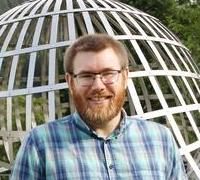Guest lectures and seminars - Page 19
We further discuss the generalization of these results to compact operators in L2, and explain how they can be used to both describe the out-performance of smooth spline approximations of solutions to differential equations when compared to classical finite element methods, and to solve the outlier-problem in isogeometric analysis.
This talk is based on work done in collaboration with Michael Floater, Carla Manni and Hendrik Speleers.
The Section 4 seminar for the Spring of 2023 will be held on Wednesdays at 10:15–12:00 (see the schedule)
C*-algebra seminar talk by John Quigg (Arizona State University)
I will discuss some of our recent results on active chiral and nematic membranes. The chiral stresses we consider give rise to a novel form of odd elasticity. To outline this phenomenology I will give explicit calculations outlining spontaneous flow transitions and shape instabilities. I will discuss the relevance of these results in developmental biology and their relation to active nematics, in particular how certain limits of active nematic membranes can reduce to a theory of an isotropic membrane with an active stress defined by the deviatoric part of the shape operator.
C*-algebra seminar talk by Roberto Conti (Sapienza University of Rome)

